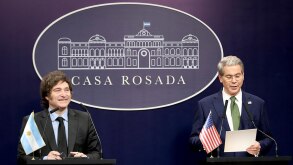Under a single judge of the Federal Court of Australia, the Australian Taxation Office (ATO) has won a transfer pricing (TP) dispute against Singapore Telecom Australia Investments (STAI).
Facts of the case
The dispute relates to a A$5.2 billion ($3.63 billion) loan issued pursuant to a loan note issuance agreement entered into on June 28 2002 by the Australian company, STAI, to a non-resident related entity, Singapore Australia Investment (SAI). The agreement was issued as part of deal consideration relating to the acquisition of shares in Singtel Optus.
In dispute was approximately A$894.7 million of interest deductions relating to the years ending March 31 2010, 2011, 2012 and 2013.
The agreement was amended three times. The first amendment on December 31 2002 provided that the maturity date in respect of the agreement could not be later than the 10th anniversary of the issue date less one day.
The second amendment was entered into on March 31 2003. It provided for the interest rate to be increased and effectively ceased the accrual of interest under the loan.
The third amendment was entered into on March 30 2009 and it changed the interest rate from a variable to a fixed rate.
Decision of the Federal Court
The decision is important for taxpayers and TP specialists as it reinforces several key principles from recent Australian TP cases such as Commissioner of Taxation v. Glencore Investment Pty Ltd (2020) 281 FCR 219 and Chevron Australia Holdings Pty Ltd v. Federal Commissioner of Taxation (2017) 251 FCR 40.
At its core, the case highlights the importance of the creditability and experience of expert witnesses. It is apparent the court favours subject matter experts in transfer pricing disputes. In this case, all expert witnesses were matter experts in credit rating and debt capital markets (DCM).
In considering the models and reports prepared by the expert witnesses, the court closely examined the conditions and commercial or financial factors underlying each hypothetical model.
STAI’s expert witness prepared a model based on a comparable commercial DCM loan, being a typical DCM bond, taken out in June 2002 under which interest could be deferred and capitalised. However, the court found that this model departed too far from the actual transaction and the characteristics of the parties to that transaction.
The court found that the terms of loan notes such as those issued in the actual transaction differed greatly from the terms of a typical DCM bond issue. Further, the overall approach undertaken by STAI’s model was fundamentally flawed.
Correct approach to be taken
Under Australian TP law, the approach to be undertaken in this particular case required analysis of what independent parties in the positions of SAI and STAI, dealing independently with each other, might have been expected to have agreed to in June 2002 and at the time of each amendment to the agreement.
Instead, STAI’s modelling, only compared in hindsight the effective spread of the agreement with that of a DCM bond issued by STAI. In essence, STAI’s modelling failed to ask the right questions.
Critical to the comparison of the models was whether the credit rating, the presence of a parental guarantee and each of the amendments to the agreement would result in STAI having a TP benefit compared to the actual transaction.
In essence, the court agreed that independent parties in the positions of SAI and STAI would have been granted a parental guarantee which then set the particular credit rating. In turn, this then set the appropriate interest rate for the hypothetical model.
Turning to each of the three amendments to the agreement, the first amendment was found to be non-consequential. The second amendment was effectively to defer and capitalise interest and the court found no commercial rationale for it. STAI argued the second amendment was necessary for cash flow reasons, but the court sided with the ATO on this point, holding that it was instead more likely to be directed at withholding tax issues.
The third amendment was to change the interest rate from a variable component to a fixed rate. Again, the court found no commercial rationale for this amendment as at the time of this amendment the global financial crisis of 2007/2008 was occurring and floating rates were generally dropping rather than increasing.
The court thus favoured the hypothetical model of the ATO termed the ‘no amendment model’. Broadly, this hypothetical model used a set interest rate, without any of the amendments applying. That interest would have been paid throughout the life of the agreement.
Under this model, the taxable income for the income years ending March 31 2010, 2011, 2012 and 2013 would have been greater than the claimed amount and thus STAI was found to have obtained a ‘transfer pricing benefit’, resulting in a decision in favour of the Commissioner.
We await an appeal from STAI.
Kelvin Yuen
Senior associate, DLA Piper












